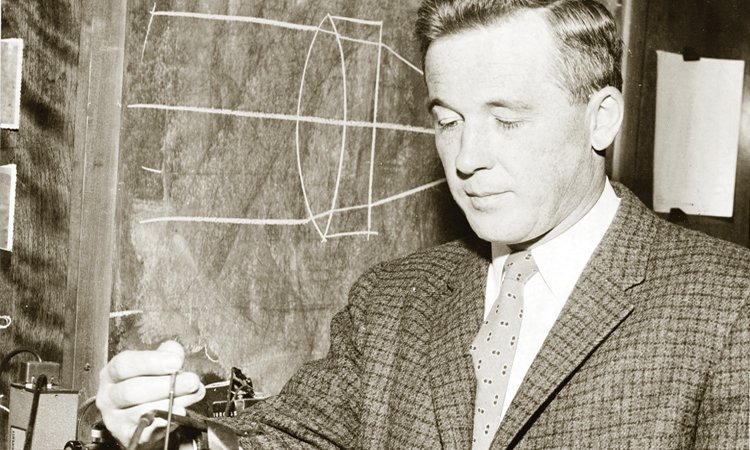Feature
OSA Centennial Snapshots: The Decade When Everything Changed
With momentum from wartime R&D funds, the optics and photonics scene post-WWII was filled with transformative innovations in optics design, surveillance, fiber optics and, of course, the laser.

Robert Hopkins in the lab in 1958. Hopkins was the director of the University of Rochester Institute of Optics from 1954 to 1965. [University of Rochester Library’s Department of Rare Books and Special Collections]
From 1945 until the late 1960s, physics research and education boomed in the United States. Much of the funding came from military agencies, which sought to maintain the technical edge that had helped win World War II. Although optical research received only a small fraction of the money, that support helped transform optics. Innovations outside the field, notably in computing and solid-state electronics, enabled new optical technology. Military developments such as surveillance satellites created new optical technology with a wide range of civilian applications. Government-supported basic research laid the groundwork for the laser and other transformative devices. And much of the innovation came from young scientists and engineers trained during the boom.
…Log in or become a member to view the full text of this article.
This article may be available for purchase via the search at Optica Publishing Group.
Optica Members get the full text of Optics & Photonics News, plus a variety of other member benefits.
